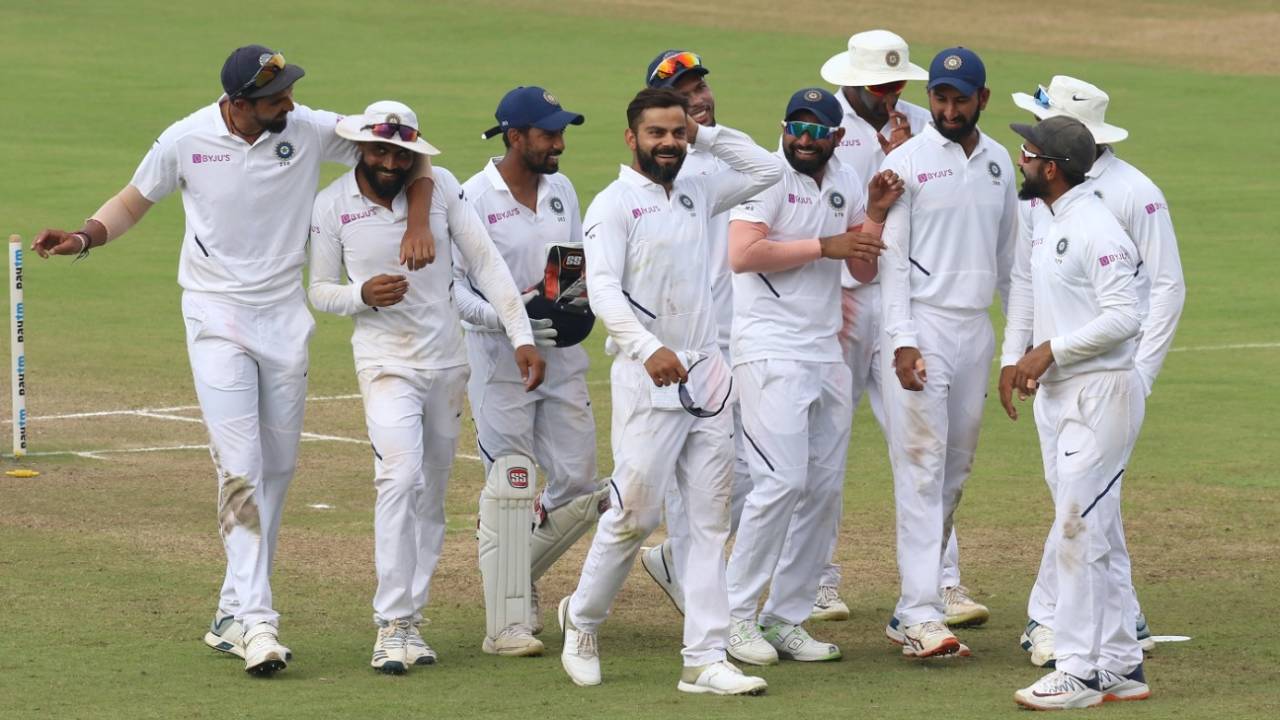Since the start of 2016, India's spinners have collectively averaged 25.32 in Test matches at home. Visiting spinners in India, in the same period, have taken their wickets at 51.18, or more than twice the cost.
For spinners, India is simultaneously the best place and the worst place in the world to bowl in.
Test matches in Australia and South Africa have produced similar disparities between the averages of home and away spinners, but fast bowlers do the bulk of the bowling in those two countries, where even the host teams' spinners average in the 30s.
This disparity isn't seen to the same extent in the rest of Asia. Host spinners have outbowled visiting spinners in Bangladesh, Sri Lanka and the UAE, but the difference in averages is far less glaring.
Visiting spinners are thrust into the harshest possible spotlight when they come to India. They have to bowl more overs than they do anywhere else, in often oppressive weather, against a batting line-up that pounces on the slightest error, and in conditions that don't necessarily offer spinners too much help.
Hang on, I hear you say. Indian pitches, not that much help for the spinners?
Yes, and not just that. Indian pitches, over the last three or so years, have offered less home advantage than most pitches in the world.
Let's go back to
November 2015, when India played their first home series under
Virat Kohli, against South Africa. The pitches for that series were infamously loaded in the spinners' favour, and it seemed then that this would become the template for home Tests under Kohli.
It hasn't panned out that way. Aside from the Pune Test against Australia
in 2017 - India's only home defeat since December 2012 - there hasn't been a square turner since that 2015 series. And while some tracks have offered a little more turn or inconsistent bounce than others, most have fallen well within the spectrum of traditional Indian pitches. They start out flat, produce large first-innings totals, and deteriorate over the fourth and fifth days.
The numbers bear this out. Since the start of 2016, away teams have scored 31.29 runs per wicket in the first innings in India. They've done better only in Sri Lanka and Australia. India's bowlers have had to work harder for their wickets than a lot of home attacks.
Tests in India, in fact, have bucked a worldwide trend for spectacular collapses. Teams have been bowled out for less than 100 on 16 occasions since the start of 2016, but not once in India. Teams have been bowled out for less than 150 only six times in India,
out of 77 instances globally . And it's only happened twice in the first innings: India's 105 in that Pune Test against Australia, and Afghanistan's 109 in their inaugural Test
in Bengaluru.
Apart from that Afghanistan Test, India have bowled a visiting team out for less than 200 in the first innings
only once in this period - West Indies
in Rajkot last year. At the other end of that table, there have been seven 350-plus first-innings totals.
In conditions like this, the first innings becomes a struggle to stay in the contest, and this is where India have excelled. They haven't lost any of the seven Tests in which their opponents have passed 350 in the first innings, and have won four of them, including Tests in which England batted first and posted 400 and 477.
India can and do overpower their opponents at home, but more often they simply outlast them. And they have to. Tests in India last longer than they do anywhere apart from the UAE. Since the start of 2016, the average Test match in India has lasted 341 overs, and a Test match in South Africa 275 overs. The difference, 66 overs, is just over two-thirds of a full day's play.
After their 3-0 defeat on extreme turners on that 2015-16 tour of India, South Africa began loading their home conditions in their bowling attack's favour. India, having given South Africa that idea in the first place, have given up on it themselves.
Four years on, they've welcomed South Africa with pitches offering only the barest-minimum advantage to the home attack, and they've won an even more impressive series victory. They have simply been better for longer.
Karthik Krishnaswamy is a senior sub-editor at ESPNcricinfo
